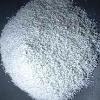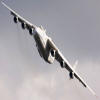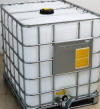Search for the supplies that you need here:
DMF Support and Documentations Available | |
 WHO-GMP Certified Good Manufacturing Practice Certified by World Health Organization |  WC, Written Confirmation for Active Substance to be imported into European Union (EU). |
Sodium Lauryl Sulfate or Sodium Lauryl Sulphate or Sodium Lauryl Sulfate EP USP NF BP Ph Eur JP Grade Manufacturers
Anmol Chemicals is a manufacturer supplier exporter of Sodium Lauryl Sulfate or Sodium Lauryl Sulphate or Sodium Lauryl Sulfate and it offers materials as per IP BP EP Ph Eur USP NF JP FCC Food Grade as per the the latest monograph at best prices. Anmol Chemicals Group, established in 1976, is the pioneer manufacturer of Specialty Chemicals, Pharmaceutical Excipients, Some API, Food Chemicals in India. Anmol Chemicals Group has manufacturing facilities spread across Western India, representatives in Houston, Chicago USA and Dubai, UAE. We also have toll manufacturing units for processing chemicals in a few countries around the world. We make IP, BP, EP, USP, NF, Ph. Eur., JP, FCC or Food Grade, Analytical Reagent Grade, LR or Laboratory Reagent Grades and Pure Grades of various chemicals. All our items are analyzed to meet the required standards. We can supply the product in grams for your laboratory trial and in tons for your plant scale jobs.
We manufacture Bulk Drugs / API, Excipients, Pharmaceuticals (IP BP USP NF Ph Eur EP JP), Specialty Chemicals (Pure/Reagent), Mineral Fortifiers (FCC). Our manufacturing facility is FDA approved and GLP, cGMP, ISO9001, ISO14001, ISO/IEC 17025, ISO22000, FSSC 22000, ISO45001, FSSAI, Kosher, HALAL, COPP, WHO-GMP certified and Written Confirmation (WC) is available. Solid materials can be customized for particle size, shape, and bulk density. We observe WHO Good Manufacturing Practices and Good Laboratory Practices. We are a government-recognized STAR Export House and "Authorised Economic Operator (AEO)" per Indian Customs.
All technical documents and DMF support available.
Sodium Lauryl Sulfate SDS of Manufacturers

Synonyms: Sodium dodecyl sulfate or Sodium lauryl sulphate
CAS Number: 151-21-3, Molecular Weight: 288.37, Chemical Formula: NaC12H25SO4, EINECS EC Number: 205-788-1, FEMA: ----,
Sodium dodecyl sulfate, synonymously sodium lauryl sulfate (or laurilsulfate; SDS or SLS, respectively), is a synthetic organic compound with the formula CH3(CH2)11SO4Na. It is an anionic surfactant used in many cleaning and hygiene products.
Sodium Lauryl Sulfate USP NF Grade Specifications
Sulfuric acid monododecyl ester sodium salt.
Sodium monododecyl sulfate CAS 151-21-3
Sodium Lauryl Sulfate is a mixture of sodium alkyl sulfates consisting chiefly of sodium lauryl sulfate [CH3(CH2)10CH2OSO3Na]. The combined content of sodium chloride and sodium sulfate is not more than 8.0 percent.
Packaging and storage: Preserve in well-closed containers.
Identification:
A: Ignite about 500 mg at 800 until the carbon is consumed: the residue dissolved in 10 mL of water responds to the tests for Sodium.
B: A solution (1 in 10) after acidification with hydrochloric acid and gentle boiling for 20 minutes, responds to the tests for Sulfate.
Alkalinity: Dissolve 1.0 g in 100 mL of water, add phenol red, and titrate with 0.10 N hydrochloric acid: not more than 0.60 mL is required for neutralization.
Heavy metals: 0.002%.
Sodium chloride: Dissolve about 5 g, accurately weighed, in about 50 mL of water. Neutralize the solution with 0.8 N nitric acid, using litmus paper as the indicator, add 2 mL of potassium chromate, and titrate with 0.1 N silver nitrate. Each mL of 0.1 N silver nitrate is equivalent to 5.844 mg of NaCl.
Sodium sulfate:
Lead nitrate solution: Dissolve 33.1 g of lead nitrate in water to make 1000 mL.
Procedure: Transfer about 1 g of Sodium Lauryl Sulfate, accurately weighed, to a 250-mL beaker, add 35 mL of water, and warm to dissolve. To the warm solution add 2.0 mL of 1 N nitric acid, mix, and add 50 mL of alcohol. Heat the solution to boiling, and slowly add 10 mL of Lead nitrate solution, with stirring. Cover the beaker, simmer for 5 minutes, and allow to settle. If the supernatant is hazy, allow to stand for 10 minutes, heat to boiling, and allow to settle. When the solution is almost to a boiling point, decant as much liquid as possible through a 9-cm filter paper (Whatman No. 41 or equivalent). Wash four times by decantation, each time using 50 mL of 50 percent alcohol, and bring the mixture to a boil. Finally, transfer the filter paper to the original beaker, and immediately add 30 mL of water, 20.0 mL of 0.05 M EDTA disodium, and 1 mL of ammonia-ammonium chloride buffer. Warm to dissolve the precipitate, add 0.2 mL of eriochrome black and titrate with 0.05 M zinc sulfate. Each mL of 0.05 M EDTA disodium is equivalent to 7.102 mg of Na2SO4.
Unsulfated alcohols: Dissolve about 10 g, accurately weighed, in 100 mL of water, and add 100 mL of alcohol. Transfer the solution to a separator, and extract with three 50-mL portions of solvent hexane. If an emulsion forms, sodium chloride may be added to promote separation of the two layers. Wash the combined solvent hexane extracts with three 50-mL portions of water, and dry with anhydrous sodium sulfate. Filter the solvent hexane extract into a tared beaker, evaporate on a steam bath until the odor of solvent hexane no longer is perceptible, dry the residue at 105C for 30 minutes, cool, and weigh. The weight of the residue is not more than 4.0% of the weight of the Sodium Lauryl Sulfate taken.
Total alcohols: Transfer about 5 g, accurately weighed, to an 800-mL Kjeldahl flask, and add 150 mL of water, 50 mL of hydrochloric acid, and a few boiling chips. Attach a reflux condenser to the Kjeldahl flask, heat carefully to avoid excessive frothing, and then boil for about 4 hours. Cool the flask, rinse the condenser with ether, collecting the ether in the flask, and transfer the contents to a 500-mL separator, rinsing the flask twice with ether and adding the washings to the separator. Extract the solution with two 75-mL portions of ether, evaporate the combined ether extracts in a tared beaker on a steam bath, dry the residue at 105 for 30 minutes, cool, and weigh. The residue represents the total alcohols, and is not less than 59.0% of the weight of Sodium Lauryl Sulfate taken.
Sodium Lauryl Sulphate BP Ph Eur Grade Specifications
Ph Eur
Sodium Dodecyl Sulphate
Sodium Laurilsulfate Ph Eur
Action and use: Anionic emulsifying agent.
DEFINITION
Mixture of sodium alkyl sulphates consisting chiefly of sodium dodecyl sulphate (C12H25NaO4S; Mr 288.4).
Content: sodium alkyl sulphates: minimum 85.0 per cent, expressed as C12H25NaO4S.
CHARACTERS
Appearance: White or pale yellow, powder or crystals.
Solubility: Freely soluble in water giving an opalescent solution, partly soluble in ethanol (96 per cent).
IDENTIFICATION
A. Dissolve 0.1 g in 10 ml of water R and shake. A copious foam is formed.
B. To 0.1 ml of the solution prepared for identification test A, add 0.1 ml of a 1 g/l solution of methylene blue and 2 ml of dilute sulphuric acid. Add 2 ml of methylene chloride and shake. An intense blue colour develops in the methylene chloride layer.
C. Mix about 10 mg with 10 ml of anhydrous ethanol. Heat to boiling on a water-bath, shaking frequently. Filter immediately and evaporate the ethanol. Dissolve the residue in 8 ml of water, add 3 ml of dilute hydrochloric acid, evaporate the solution to half its volume and allow to cool. Separate the congealed fatty alcohols by filtration. To the filtrate add 1 ml of barium chloride solution. A white, crystalline precipitate is formed.
D. Ignite 0.5 g. The residue gives reaction of sodium.
TESTS
Alkalinity: Dissolve 1.0 g in 100 ml of carbon dioxide-free water and add 0.1 ml of phenol red solution. Not more than 0.5 ml of 0.1 M hydrochloric acid is required to change the colour of the indicator.
Non-esterified alcohol: Maximum 4 per cent.
Sodium chloride and sodium sulphate: Maximum 8.0 per cent for the total percentage content.
Sodium chloride: Dissolve 5.00 g in 50 ml of water, add dilute nitric acid dropwise until the solution is neutral to blue litmus paper, add 2 ml of potassium chromate solution and titrate with 0.1 M silver nitrate.
1 ml of 0.1 M silver nitrate is equivalent to 5.844 mg of NaCl.
Sodium sulphate: Dissolve 0.500 g in 20 ml of water, warming gently if necessary, then add 1 ml.
We also manufacture Sodium Laurilsulfate EP Grade and Sodium Lauryl Sulfate JP Grade.
Keywords: Sodium laurilsulfate sodium dodecyl sulfate, Sodium lauryl sulphate IP BP Ph Eur EP USP Analytical Reagent FCC Food Grade CAS Number 151-21-3 Manufacturer Supplier Exporter Monograph Uses Chemical Molecular Formula Weight.



Manufacturer Supplier Exporter
ANMOL CHEMICALS Private Limited
Representatives in Houston, Chicago and New York, USA
TEL: (OFF) +91 22 23726950, +91 22 23774610, +91 22 23723564
Taloja Navi Mumbai, Banglore, INDIA
e-mail: info@anmol.org
Copyright and Usual Disclaimer is Applicable
Last updated 23-oct-25
Exporters to USA, Canada, UAE, Kuwait, Qatar, Gautemala, Tunisia, Europe, South Africa, Bangladesh, Sri Lanka, Tanzania, Kenya, Egypt, Iraq, Turkey, Israel, Vietnam, Nigeria, Uganda, Brazil, Chile, Argentina, Dubai, UAE, Saudi Arabia, Cameroon, Mexico, Brazil, Chile, Argentina, Korea, Thailand, Malaysia, Indonesia, Jakarta, Australia, China, Germany, France, etc.
Representatives in New York, Houston - Texas, Chicago - Illinois, Los Angeles.
All products are Sold for Industrial and Laboratory Use only.
Fast Selling IP BP Ph Eur EP USP NF JP Analytical Reagent FCC Food Grades of Chemicals by Anmol Chemicals
Ammonium Persulfate --- Acetic Acid Glacial --- Aluminum Chloride --- Ammonium bicarbonate --- Benzyl Alcohol --- Butylated Hydroxyanisole --- Butylated Hydroxytoluene --- Boric Acid --- Calcium Butyrate --- Calcium Chloride --- Calcium Hydroxide --- Calcium Lactobionate --- Calcium Saccharate --- Carbamide Peroxide --- Calcium Oxide --- Calcium Sulfate --- Chromic Chloride --- Fumaric Acid --- Magnesium Butyrate --- Magnesium Chloride --- Magnesium Sulfate --- Malic Acid --- Maleic Acid --- Manganese Chloride --- Manganese Sulfate --- Octyldodecanol --- Oleic acid --- Phenylethyl Alcohol --- Propylene Carbonate --- Potassium Hydroxide Pellets --- Potassium Alum --- Selenious Acid --- Sodium Acetate --- Sodium Bromate --- Sodium Selenite --- Sodium Perborate --- Sodium Hydroxide --- Sodium Sulphate --- Sodium Sulfide --- Sodium Thiosulfate --- Urea --- Zinc Chloride --- Zinc Sulphate ---
Sodium Lauryl Sulfate
Sodium Laurilsulfate or Sodium Lauryl Sulphate or Sodium Lauryl Sulfate EP BP Ph Eur USP NF Grades Manufacturers



















